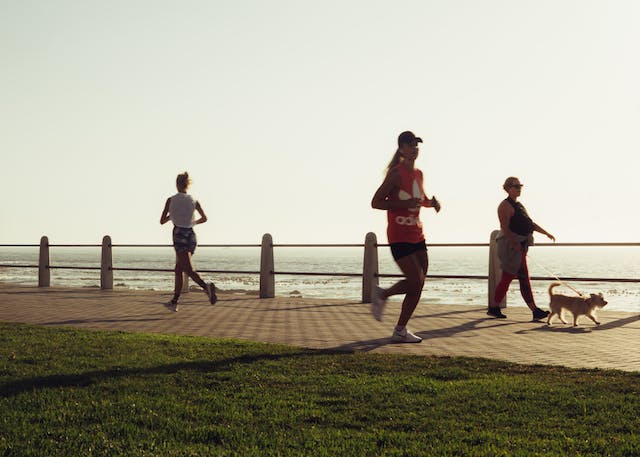Living an active life is about more than just exercising regularly; it’s a comprehensive approach to wellness that encompasses physical activity, mental well-being, and a balanced lifestyle. In today’s fast-paced world, finding the time and motivation to stay active can be a challenge, but the benefits for your health, mood, and overall quality of life are undeniable. Whether you’re looking to boost your energy levels, improve your health, or simply enjoy a more vibrant lifestyle, these key tips can help guide you on your journey to living an active life. Let’s dive into the practical steps you can take to embrace activity in all aspects of your life.
1. Set Realistic Goals
Goals give direction, but realistic goals ensure progress. They should reflect your current fitness level, lifestyle, and personal interests. If you’re new to exercise, setting a goal to walk 30 minutes a day could be a great start. For those more experienced, perhaps aiming for a half-marathon or mastering a new fitness class is more appropriate. Celebrate small victories along the way as they build momentum and confidence. Adjust your goals as you evolve, keeping them challenging yet attainable.
2. Educate Yourself on Health Risks
Awareness of health risks associated with inactivity, such as heart disease, diabetes, and certain types of cancer, can underscore the importance of maintaining an active lifestyle. For individuals dealing with or at risk of specific conditions like Mesothelioma, there are tons of helpful resources online like Mesothelioma Hope. Consult healthcare providers about safe and effective ways to stay active despite health challenges.
3. Find Activities You Enjoy
The key to consistency in an active lifestyle is enjoyment. Experiment with different activities until you find those that spark joy and excitement. Remember, what works for someone else might not work for you, and that’s okay. The aim is to transform physical activity from a chore into a cherished part of your day. This might mean trading the treadmill for dance classes or swapping the swimming pool for cycling trails. The more you enjoy the activity, the less it feels like exercise, and the more it becomes a rewarding part of your life.
4. Incorporate Movement into Your Daily Routine
Activity doesn’t have to mean structured exercise. Look for creative ways to weave movement into your everyday life. Opt for a bike ride to the local store instead of driving, take a walking meeting at work, or play actively with your kids or pets. These small incorporations can significantly increase your daily activity levels without feeling like an additional task on your to-do list. This approach also helps break down the mental barrier between ‘exercise time’ and ‘the rest of the day’, fostering a truly active lifestyle.
5. Stay Hydrated and Eat Well
A well-nourished body performs better, recovers faster, and feels more energized. Think of food as fuel: quality matters. Incorporate a variety of nutrients to support your activity levels, focusing on whole foods and minimizing processed items. Hydration is equally important; it impacts energy levels, physical performance, and recovery. Carrying a water bottle can serve as a constant reminder to drink regularly, ensuring you’re well-hydrated to support your active endeavors.
6. Make It Social
Transforming activity into a social event can amplify its benefits. It’s not just about the physical gains but also about connecting with others, sharing experiences, and building relationships. Group activities can provide a sense of community and belonging, making the active lifestyle more fulfilling. Whether it’s joining a local running club, attending group fitness classes, or simply walking with a friend, the social aspect of exercise can be a powerful motivator, making it easier to stick to your goals and enjoy the journey. And what about finding a mentor? Someone like Kevin Morgan who has a lot of experience and who understands how to motivate people to get fit would be an ideal choice.
7. Listen to Your Body
Your body is an excellent communicator, often signaling when it’s time to push forward or take a step back. Ignoring these signals can lead to overtraining, injury, or burnout. Pay attention to fatigue, soreness, and other physical cues. Rest days are vital, as they allow your body to recover and grow stronger. Embracing activities like gentle stretching or yoga on lighter days can keep you moving without overtaxing your system. Listening to your body ensures a balanced approach to staying active, fostering long-term health and fitness.
8. Embrace Outdoor Activities
Outdoor activities can significantly enhance your physical and mental well-being. Nature’s scenery provides a refreshing backdrop that can make exercise feel less like a routine chore. The varied terrain of outdoor settings challenges your body in unique ways, improving your physical fitness. Additionally, sunlight exposure boosts vitamin D levels, enhancing mood and overall health. Whether it’s a brisk walk in the park, a challenging hike, or a leisurely bike ride, the outdoors offers endless opportunities to stay active and reconnect with nature.
9. Stay Flexible with Your Routine
Adaptability is key to maintaining an active lifestyle amidst life’s ever-changing circumstances. Being too rigid with your exercise routine can lead to frustration and setbacks, especially when unexpected obligations arise. Instead, adopt a flexible mindset that allows you to adjust your activities based on available time, energy levels, and interests. This might mean switching a gym session for a home workout or opting for a quick, high-intensity interval training (HIIT) session when pressed for time. Flexibility in your approach ensures that staying active remains a consistent and enjoyable part of your life, regardless of life’s unpredictability.
10. Use Technology to Your Advantage
Technology offers a plethora of tools to support and enhance your active lifestyle. Fitness apps can track your progress, provide workout ideas, and even offer virtual coaching. Wearable devices monitor your heart rate, steps, and overall activity levels, giving you insights into your health and motivating you to keep moving. Online communities and social media can also offer support, inspiration, and accountability. However, it’s essential to balance tech use with tech-free activities, ensuring that your active life remains diverse and grounded in real-world experiences.
11. Focus on the Long-Term Benefits
Adopting an active lifestyle is an investment in your future self. Beyond the immediate energy boost and mood enhancement, regular physical activity plays a critical role in preventing chronic diseases, improving longevity, and enhancing the quality of life. Keeping the long-term benefits in mind can motivate you to stay committed, even when immediate results aren’t visible. It’s about more than just physical health; it’s about crafting a life filled with vitality, resilience, and joy.
Conclusion
Living an active life is a journey, not a destination. By setting realistic goals, finding joy in movement, and making informed choices about your health, you can enjoy the myriad benefits that come from an active lifestyle. Remember, every step you take towards activity is a step towards a healthier, happier you.




